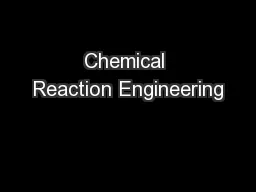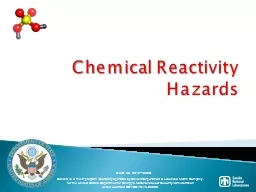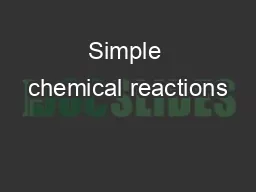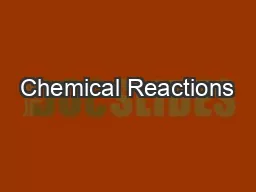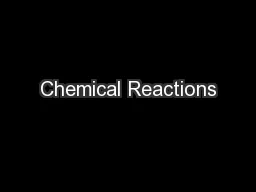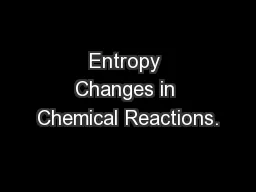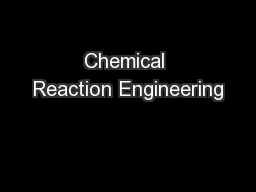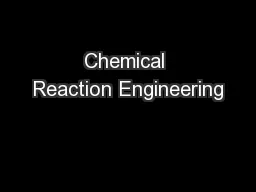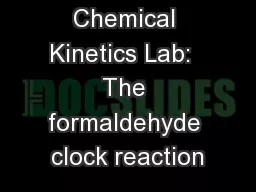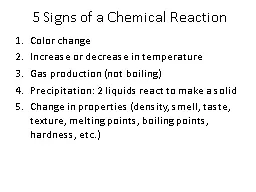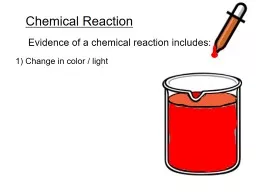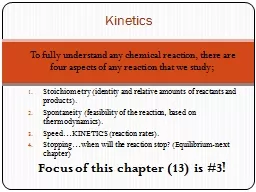PPT-Chemical Reaction Engineering
Author : calandra-battersby | Published Date : 2018-03-21
CRE is the field that studies the rates and mechanisms of chemical reactions and the design of the reactors in which they take place Lecture 18 Web Lecture 18 Class
Presentation Embed Code
Download Presentation
Download Presentation The PPT/PDF document "Chemical Reaction Engineering" is the property of its rightful owner. Permission is granted to download and print the materials on this website for personal, non-commercial use only, and to display it on your personal computer provided you do not modify the materials and that you retain all copyright notices contained in the materials. By downloading content from our website, you accept the terms of this agreement.
Chemical Reaction Engineering: Transcript
Download Rules Of Document
"Chemical Reaction Engineering"The content belongs to its owner. You may download and print it for personal use, without modification, and keep all copyright notices. By downloading, you agree to these terms.
Related Documents

